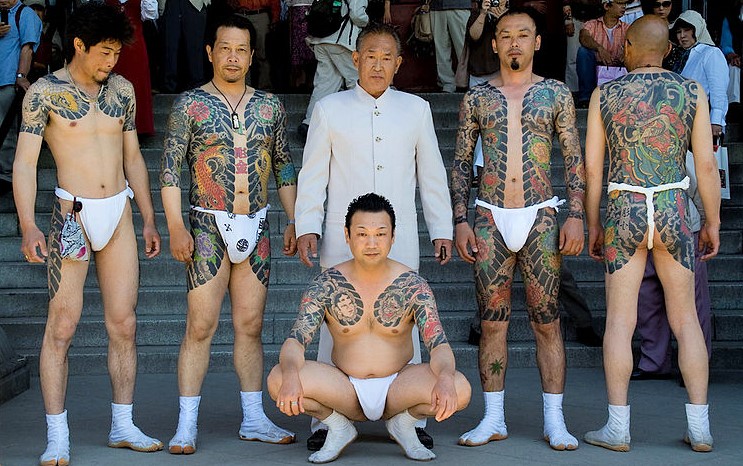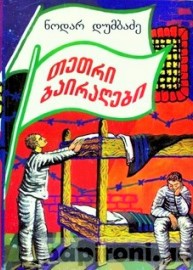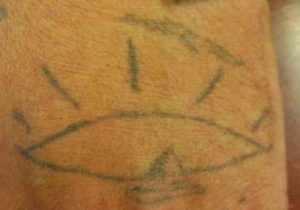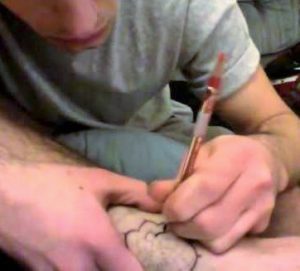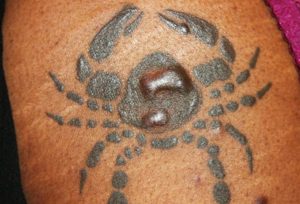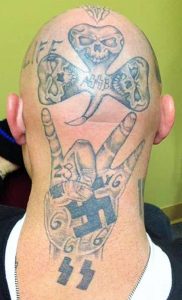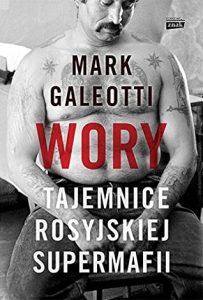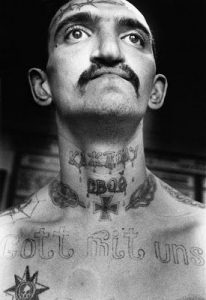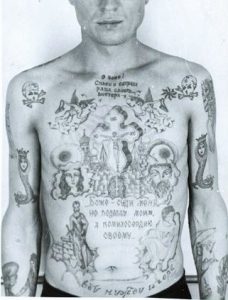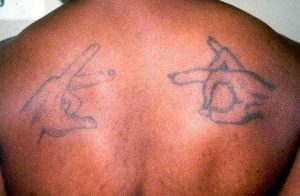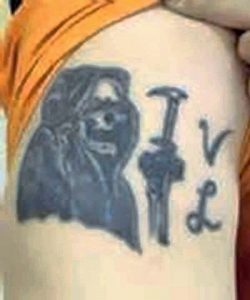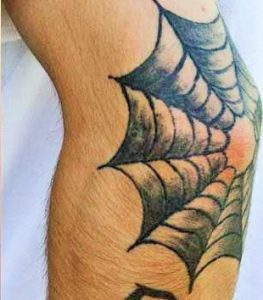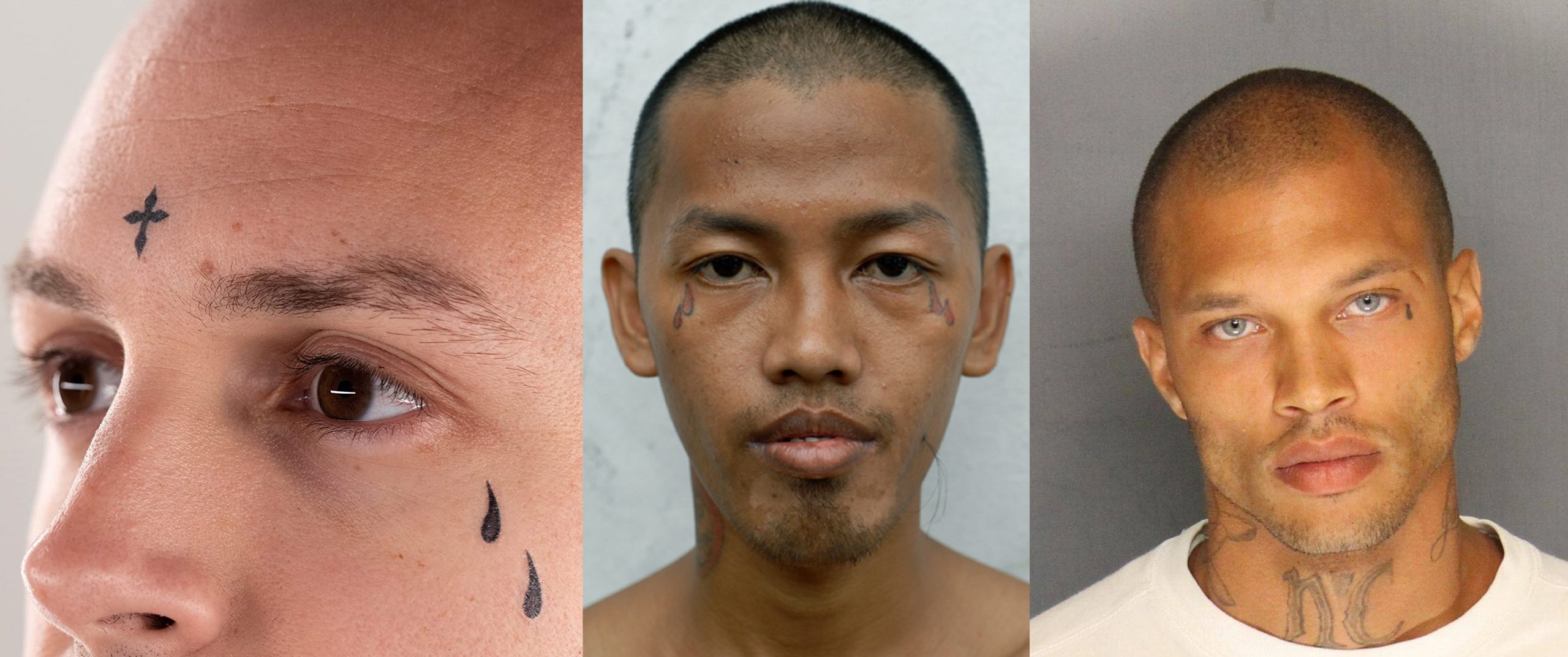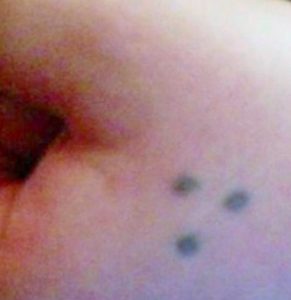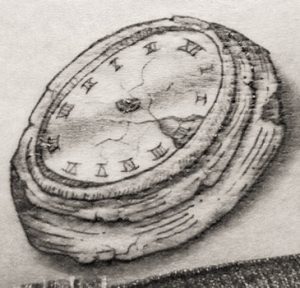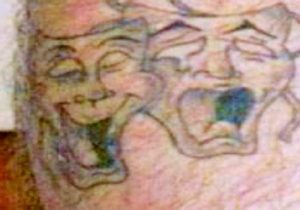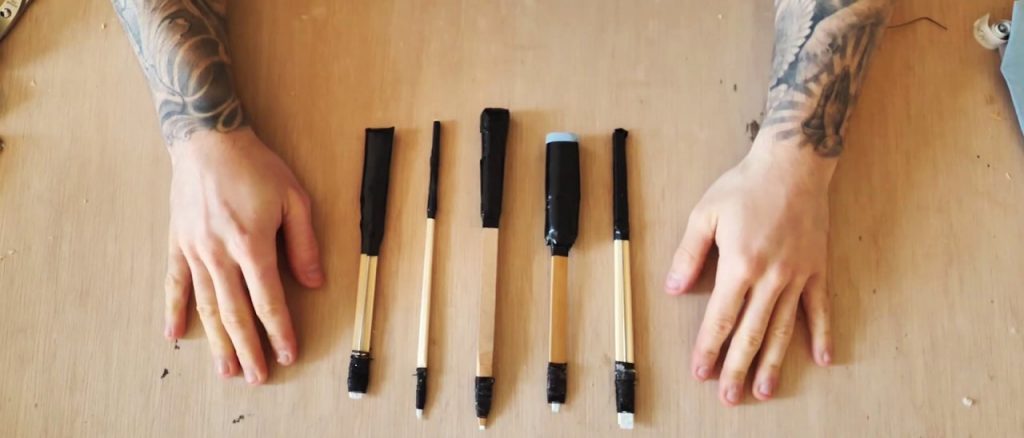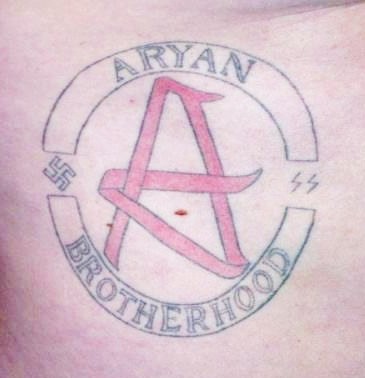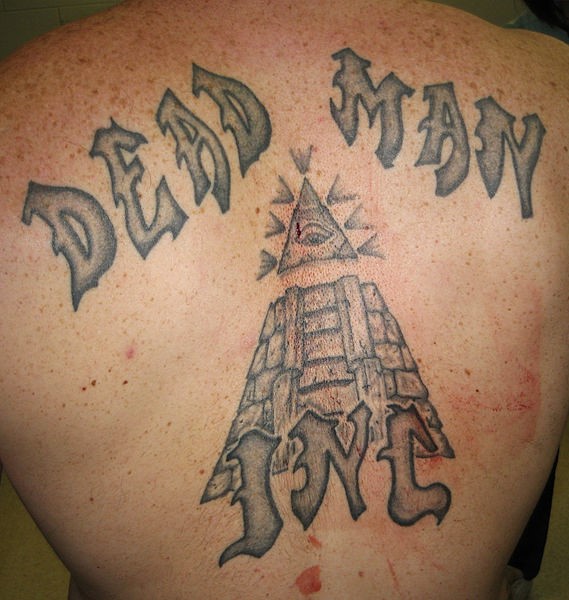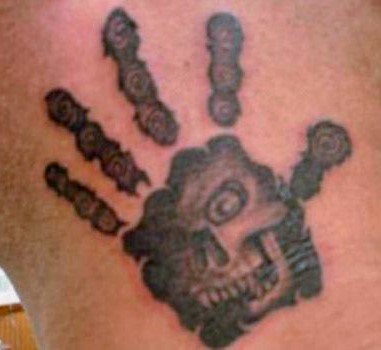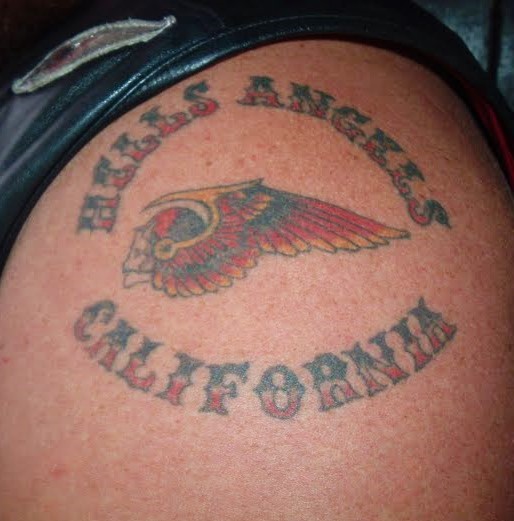If you aren’t in a prison or a gang, who cares? More people than you might imagine! Think self-preservation and decision making—not to mention writing realistically.
- Prison employees
- Parole officers
- Social workers
- Police officers
- Medical providers
- Those new to the neighborhood/prison
- Border patrol
- Anyone living or travelling in Eastern Europe or Russia
Indeed, an extensive list of tattoos, with pictures and meanings, has been produced for the Canadian Border Patrol. It’s available online at publicintelligence.net (search tattoos and their meanings).
Another good source is corrections1.com.
There is an abundance of on-line information about the meaning of prison tattoos, and it’s generally consistent. But keep in mind, there are varied meanings, and context is important. One example here would be playing cards, typically found on the knuckles. In Russian prisons, the suit chosen have meanings. In other settings, this type of tattoo may indicate someone who likes to gamble, or who sees life as a gamble. (See below.)
The Nature of Prison Tattoos
Overall, prison tattoos tend to look dark and crude. Inmates tattoo each other using whatever equipment they can gather, such as staples, ballpoint pens, paper-clips, improvised needles, molten rubber, styrofoam, etc.
Sometimes the “artist” will draw a picture on a wooden plank, place needles along the lines of the design, cover the needles with ink and stamp the whole tableau on the prisoner’s body. Another method is to slice the image onto the skin with a razor and daub the cut with indelible ink. When prisoners manage to get an electric shaver and a syringe with a needle, they can jury-rig a tattooing machine.
Ink is hard to come by, so for dye, they can use pen ink. Also, they can burn the heel of a shoe, and mix the ash with the prisoner’s urine – a practice superstitiously believed to reduce the chance of infection. Research has revealed a connection between tattoos and high rates of hepatitis C among prisoners.
Tattooing is typically slow and nearly always painful. Conditions are inevitably far from sterile, so infections and complications are common. Suffice it to say that what prison tattoos convey is important to the wearer.
Not All Tattoos are Voluntary
The most famous instance would be during the Holocaust when concentration camp inmates were tattooed with an identification number. Also see the section on gender below. Any tattoo that stigmatizes a prisoner, or invites abuse by other inmates, is likely to have been applied involuntarily.
White Supremacist Gang Tattoos
- KKK
- Neo-Nazism
- Arian Brotherhood (AB)
- Family Affiliated Irish Mafia (FAIM)
- Sacramaniac
- Number tattoos
- General white supremacist symbols
- For example 1488 (or 14 or 88) found anywhere on the body identifies white supremacists/Nazi inmates. There are a variety of tattoos associated with the Arian Brotherhood, important to identify, for they make up 1% of the prison population but commit 20% of inmate murders.
- FAIM members sometimes wear a shamrock as well, signifying affiliation with the AB—but this is only allowed with permission of the AB
Russian Prison Tattoos
In the Soviet Union, particularly during Joseph Stalin’s time, non-political prisoners (thieves, murderers, arsonists, etc.) in the Gulag system were often given preferential treatment by prison guards. Tattoos told the guards as well as other prisoners how to treat a prisoner, including what labor assignments they got and whether to assign prisoners as enforcers. Eventually, non-political prisoners gained so much power within the Gulags that the Vor v Zakony (Thieves in Law) essentially ran many of the prison camps. Today, the Vory is one of the most powerful mafia organizations in the world. In many areas within the former Soviet Union, anyone with visible tattoos is assumed to be affiliated with the Vory or pretending to be.
- Star
- Manacles
- Epaulette
- Birds on horizon
- Barbed wire
- Symbol of the cross
- Crowns and rings
- Scarab beetle
- Playing cards
- Cat
- A cat tattoo represents a thief.
- One cat = the prisoner worked alone
- Multiple cats = the prisoner was part of a gang of thieves
- A cat tattoo (think stealthy as a cat) is considered good luck for a thief
- If worn on the chest, it also signals a dangerous criminal who hates law enforcement
Playing card suits carry specific meanings: spade represents a thief; clubs symbolize criminals in general, diamonds label stoolpigeons and informants – and was probably applied by force—and hearts imply that someone is looking for a romantic partner in the prison, which may also be forcibly applied.
The knife through the neck tattoo, in Russian prisons, means the bearer is a murderer—and proud of it. Much has been written about Russian prison tattoos. If interested, you can find information specific to Japan, Australia, France, Italy, etc.
Street/Prison Gang Tattoos
- Mara Salvatrucha 13
- Black Guerrilla Family
- Red Blood Dragon
- Gangster Discipes
- Santana
- Mexican Mafia
- Mexikanemi
- Texas Syndicate
- Almighty Latin King Nations
- 18th Street Gang
- Sureños
- Norteños
- Texas Chicano Brotherhood
- Border Brothers
- Hells Angels
- Bloods
- Crips
- Indian Warrior
- Laotian Boyz (LB)
Common Symbols
- Tiger
- Spider web
- Tear drop
- Three dots
- Five dots
- Angel of death
- Clown faces/masks
- Vida loca
- Barbed wire
- A spiderweb, typically representing a lengthy incarceration, is commonly found on the elbow or neck.
- Teardrops can mean a lengthy prison sentence, that the wearer has committed murder, or that one of the inmate’s friends was murdered and the tattooed one is seeking revenge.
According to corrections1.com, “One of the most widely recognized prison tattoos, the teardrop’s meaning varies geographically. In some places, the tattoo can mean a lengthy prison sentence, while in others it signifies that the wearer has committed murder. If the teardrop is just an outline, it can symbolize an attempted murder. It can also mean that one of the inmate’s friends was murdered and that they are seeking revenge. The teardrop has been popularized recently by rappers and other celebrities, but still remains a staple in prisons. Those who are newbies behind bars with a teardrop tattoo will make a lot of enemies, fast.”
Alternatively, Mental Floss says, “There are many stories about why a prisoner would have this tattoo, but the most common is that an unfilled teardrop might symbolize the death of a loved one, while an opaque one might show that the death has been avenged.
Three dots representing “my crazy life” (vida loca) refers to the gang lifestyle, but no particular gang; typically applied at the corner of the eye or between the thumb and index finger. Sometimes three dots, like three crosses, represents the holy trinity of Christianity.
Five dots between the thumb and forefinger represents time done in prison. It’s found internationally. Located elsewhere on the body, this design may mean association with the People Nation gang.
A clock with no hands represents doing time and a lot of it. Ditto watch without hands or an hourglass.
Barbed wire tattoos are fairly common and many have no specific meaning. Sometimes each barb represents a year served in prison. On the forehead, such tattoos typically mean serving a life sentence.
Laughing and crying clown faces/masks often means “Laugh now, cry later” attitude of the gang lifestyle.
Gender As a Factor in Prison/Gang Tattoos
Although there is much online discussion of convict tattoos in general, most of the images shown feature men. From this, with an overlay of gender stereotypes, one might conclude that tattoos among female inmates are rare. But I found one research paper to the contrary.
“This study confirmed that there is a high frequency of tattoos among female offenders, but disproved the hypothesis that the frequency would be higher and more aggressive among violent offenders in comparison to non-violent offenders. Based on these findings, non-violent female offenders were more likely than violent female offenders to have a tattoo or tattoos, to have multiple tattoos, and to have aggressive or masculine tattoos. However, offenders convicted of violent crimes like robbery and assault or battery had the most visible tattoos, primarily located on the hands, face, fingers, and wrists.”
(Sullivan, Megan, “Crimes Committed By Tattooed Female Offenders and the Significance of Body Art Content and Location” (2011). All Regis University Theses. 48 (.https://epublications.regis.edu/theses/483)
I found no indication that the images and/or their meanings differ by gender.
And according to Wikipedia, “Forced and enslaved prostitutes are often tattooed or branded with a mark of their owners. Women and girls being forced into prostitution against their will may have their boss’ name or gang symbol inked or branded with a hot iron on their skin. In some organizations involved with the trafficking of women and girls, like the mafias, nearly all prostitutes are marked. Some pimps and organizations use their name or well-known logo, while others use secret signs. Some years ago, the branding mark was usually small, only recognized by other pimps, and sometimes hidden between the labia minora, but today some “owners” write their names in big letters all upon the body of the victim.”
Bottom line: Tattoos can carry a lot of meaning. When deciphering that meaning, tread carefully.

